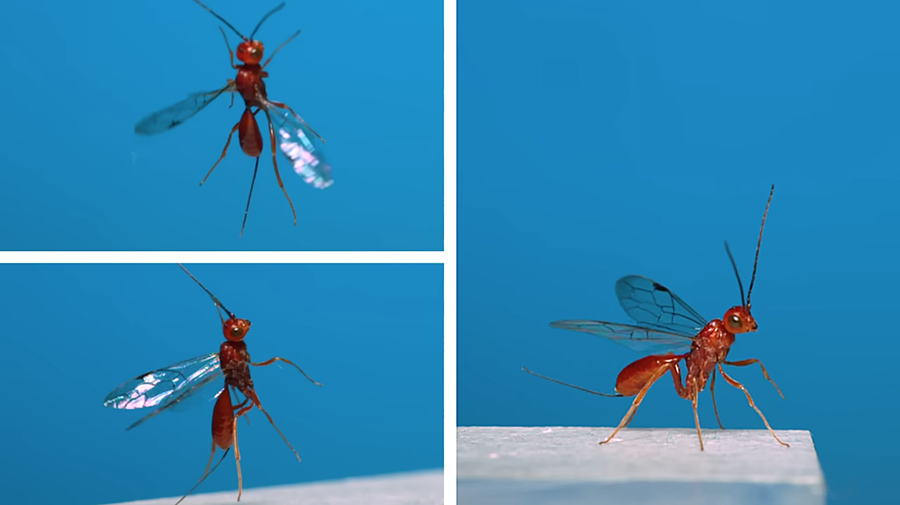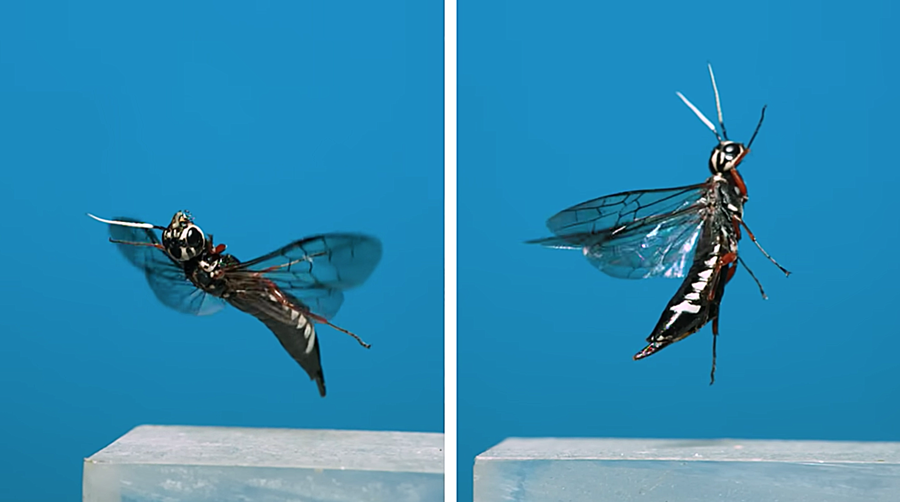“When I picture a wasp, I think it’s something like this,” Dr. Adrian Smith indicates at the start of this Ant Lab video. “This is the intimidating stare of a bald-faced hornet.”
“And I’d be lying if I said I wasn’t a little nervous filming this one up close and in flight. This wasp lives in a colony and defends its nest with a venom-injecting stinger.
“But social wasps like this represent less than 1% of all wasp species. As I found out filming the rest of the insects in this video, most of them are creatures that live vastly different lives.”
Take a look at some of the solitary wasps that changed Smith’s perceptions, including the Braconid wasp and Aulacid wasp (below). These parasitoids deposit eggs on or in the bodies of other arthropods to provide nutrition and protection, often at the host’s expense.
Footage was captured by filming at 6,000fps, except where noted. Other species include: Cotesia congregata, also known as the tobacco hornworm parasitoid, a sawfly, a wood wasp (below), ichneumonid wasps, and a wingless Lelaps argenticoxa.
Follow Ant Lab on YouTube. There’s also more on Adrian Smith’s Instagram.
Then watch these related wasp and insect videos next:
• Why are wasps just as wonderful as bees?
• Thirsty Wasp brings water to nest in slow motion
• The incredible gall(s) of parasitic wasps
• 15 species of flies take off in slow-motion
• Moths and Beetles: 12 species in slow-motion flight
Bonus topic: Parasitism.
Curated, kid-friendly, independently-published. Support this mission by becoming a sustaining member today.



